Preserving the knowledge and traditions of bygone days and passing them on to the present generation in an understandable way is the task of a museum. I visited the open-air museum in Schwerin and not only learned something about the life of the Mecklenburg rural population from the 17th century, but also learned a lot about the life of bees. Especially the visit to the bees impressed me very much.
Open-air museum in Schwerin – Mueß
On the southern shore of Lake Schwerin lies the former fishing and farming village of Mueß. The historically grown village complex is still almost unchanged and is almost completely located on the grounds of the open-air museum in Schwerin.
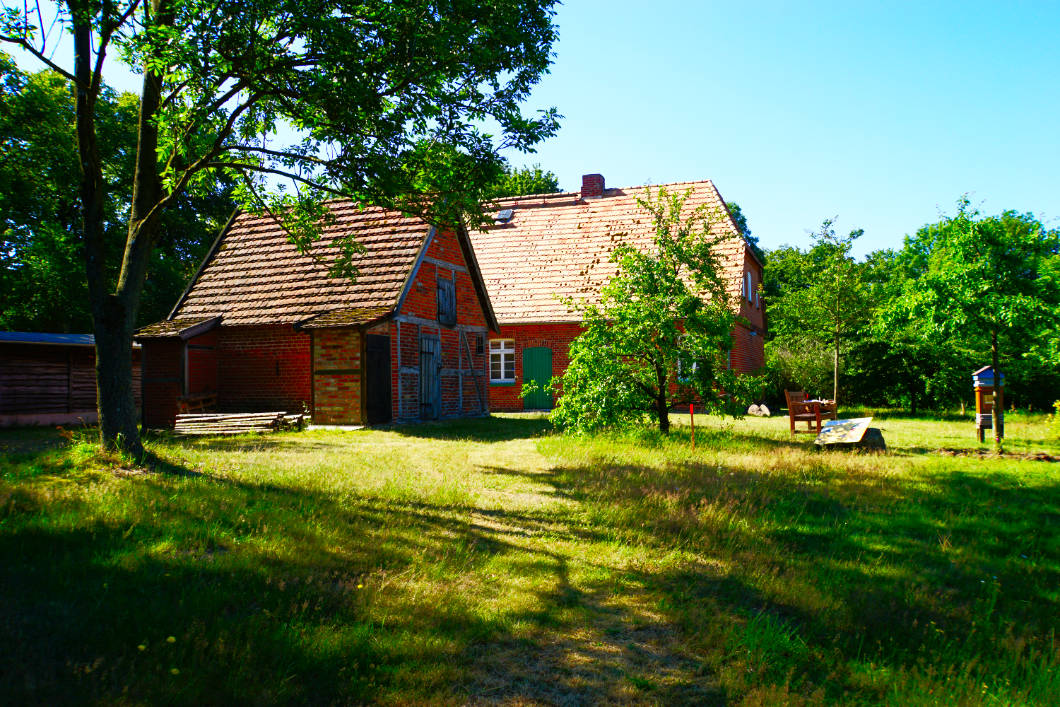
The museum village consists of 17 buildings scattered over an area of about 7 hectares.
During a tour of the grounds, one learns a lot about the life of the Mecklenburg rural population from the 17th to the beginning of the 20th century.
Schoolhouse with school garden
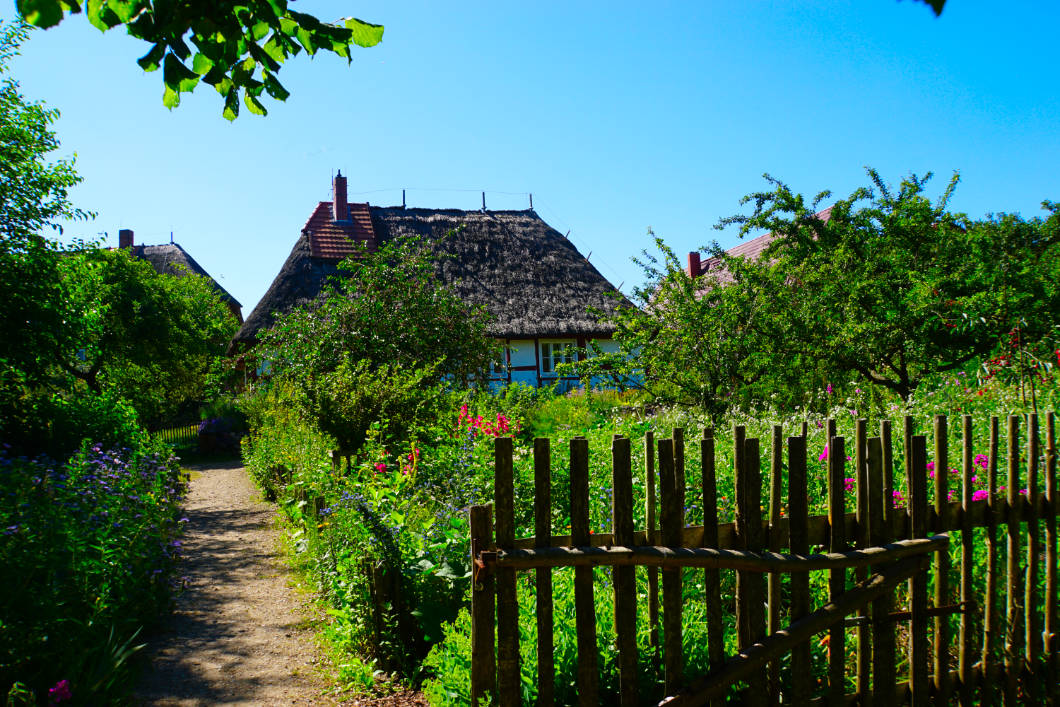
I was able to take a look inside the village school (1836) during my tour. Already at the entrance I felt transported back in time. The slippers were ready and I can imagine how the children changed their shoes here in the morning and then took a seat on the wooden benches in the classroom.
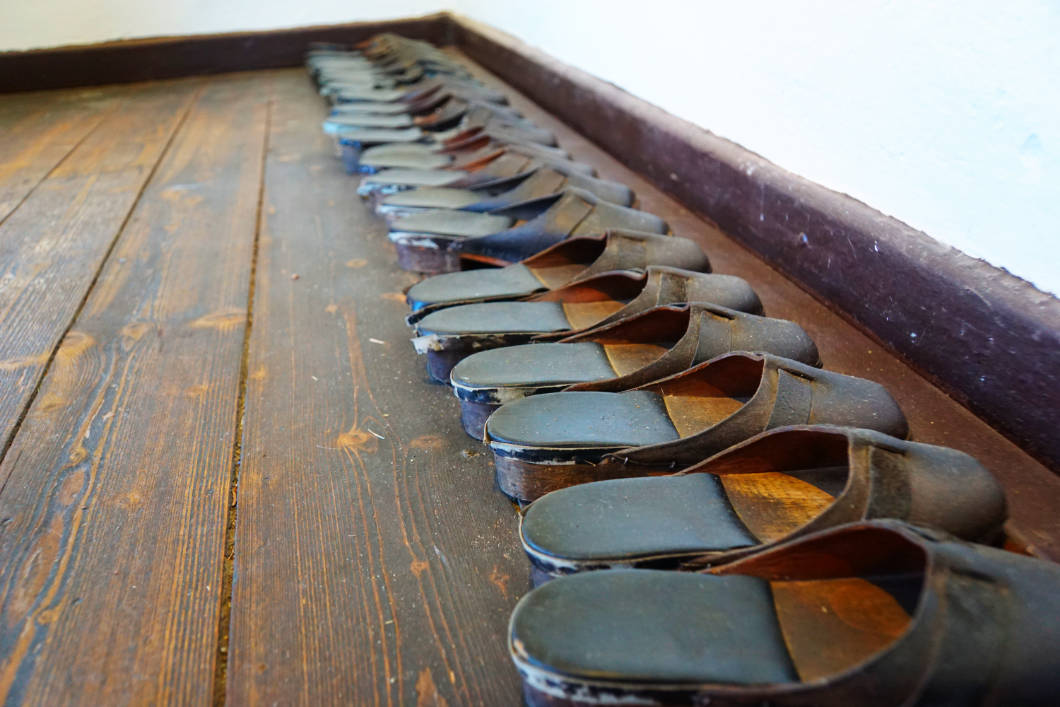
Certainly, as it was usual in a village school, all age groups met here in one classroom and the teacher taught all school subjects. An important part of the schoolhouse was also the associated garden. Here the children not only learned about cultivation methods and plants, but everything about the production of flax and linen was also taught. This still includes a small silkworm population, which contributes impressively to the illustration of the subject.
Farmhouse life
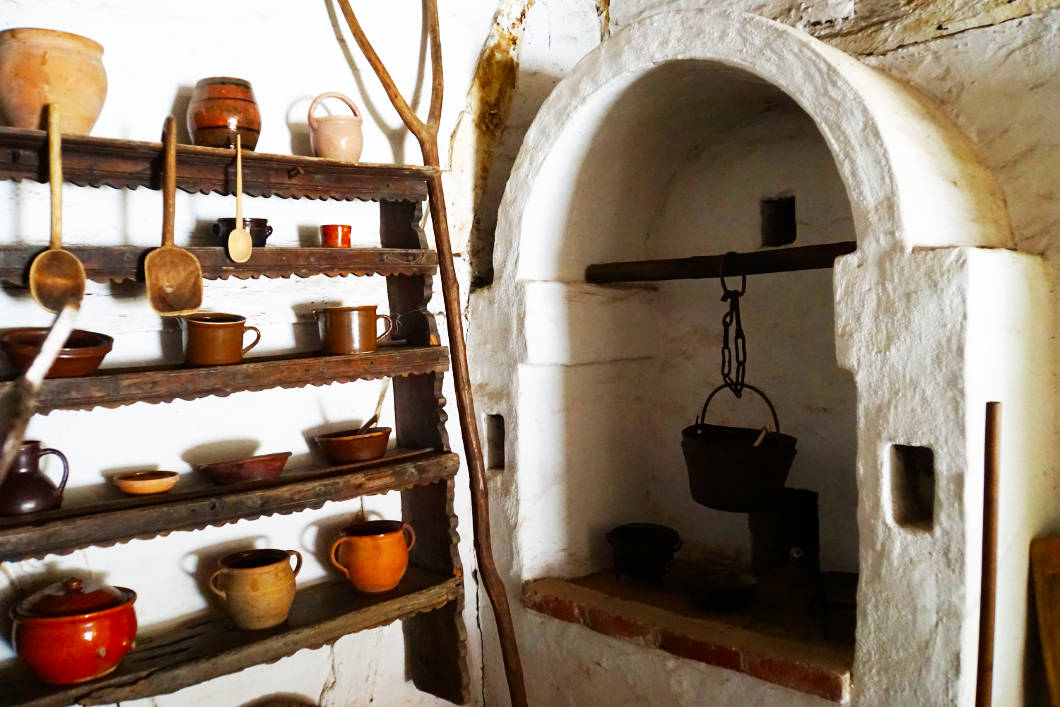
In another house I could learn about life in a farmhouse. In addition to the furnishings of the living quarters, which were typical for that time, the action “Sünndags in de Koek” took place in a large kitchen. Here, amateur actors in historical costumes regularly re-cook old Mecklenburg dishes. Of course, you are not only allowed to watch them, but also to taste them. Freshly prepared and still warm, we had a taste of a cherry soup with Klütern – made of course from freshly harvested cherries from the museum garden! Delicious!
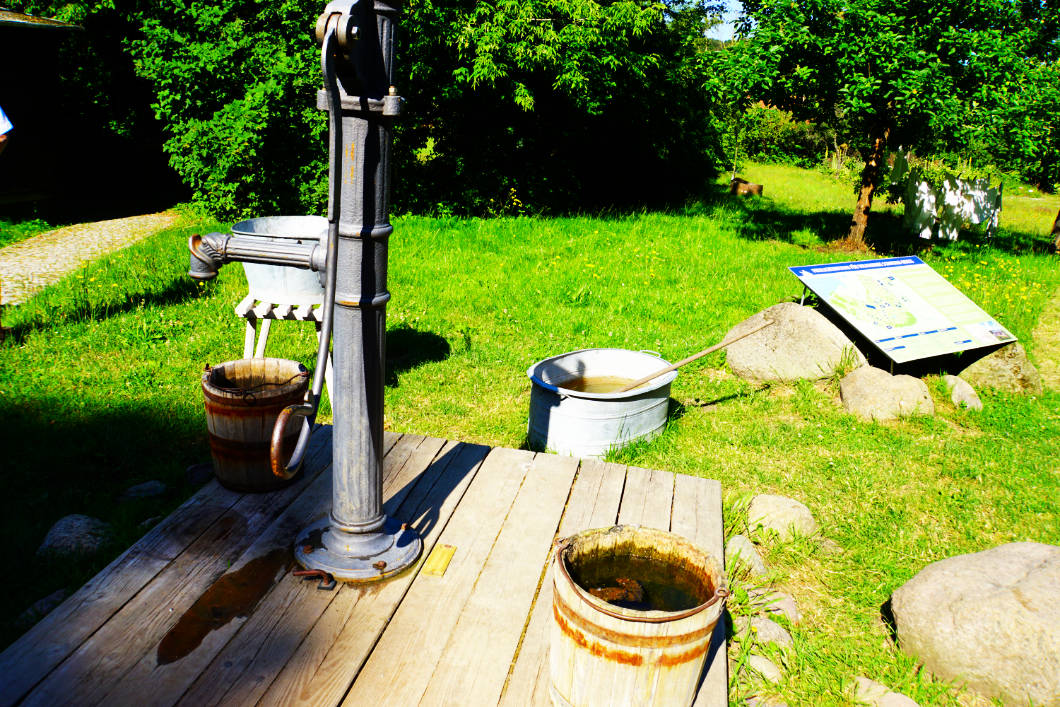
I really enjoyed the stroll through the expansive museum village. I am a big fan of half-timbered houses and love the charm of the thatched roofs. There is really a lot to discover and I think you should take some time to explore everything at your leisure.
On the track of bees
A special feature of the open-air museum in Schwerin is the bee trail that has been laid out on the grounds. When visiting the museum, you can discover this nature trail alone or sign up for a guided tour as a small group. There are 5 stations that have been created in the open-air museum in Schwerin and give a great insight into the topic.
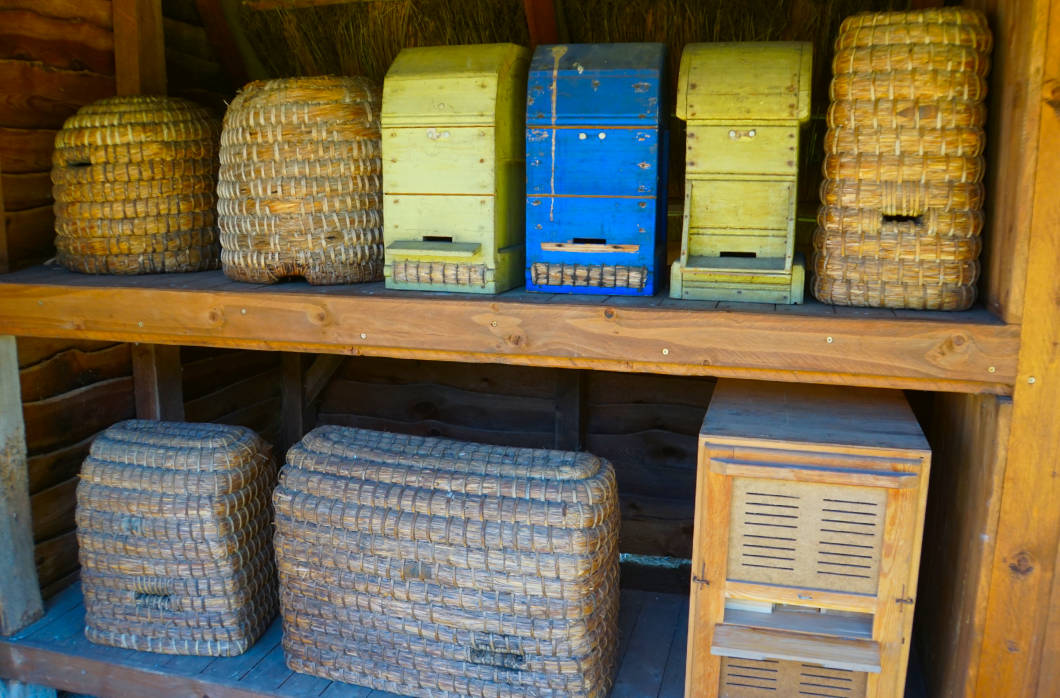
For example, one station shows old beehives sheltered under the so-called Immenschur (protective roof). I really like the beehives made of straw and clay, but I can also understand that they are somewhat impractical for harvesting the honeycombs. The angular wooden boxes used today make the beekeeper’s work much easier.
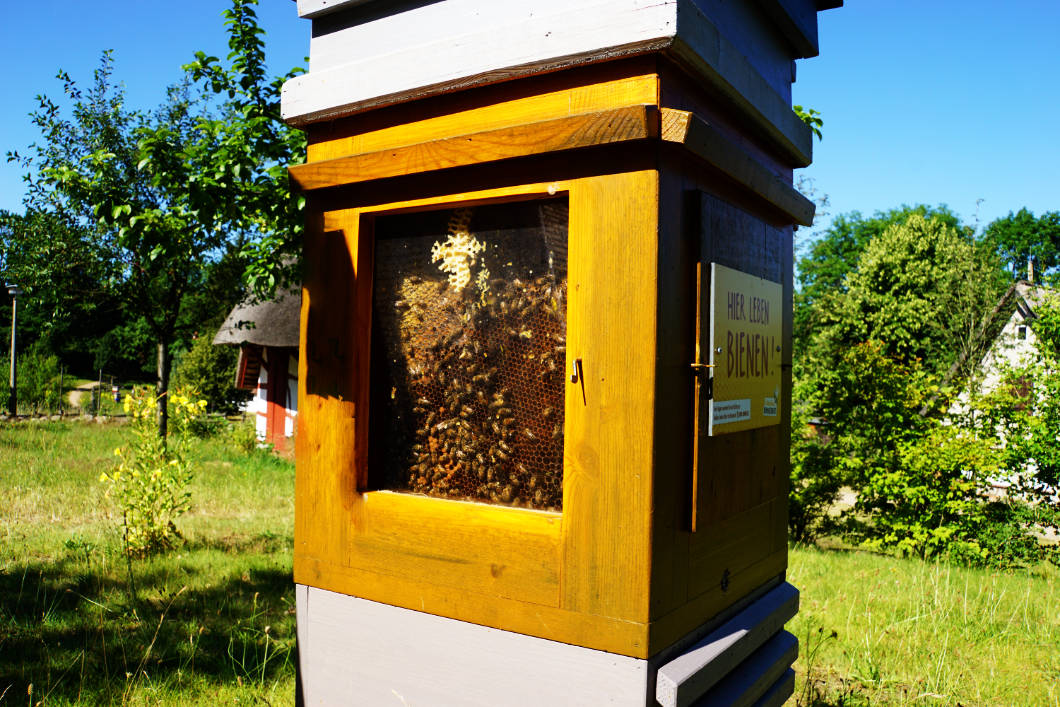
At one station I was able to take a look inside an actively used beehive. Here, by removing a wooden panel, you can observe the bees behind a plexiglass pane. What a hustle and bustle there is. For the layman a wild confusion, but here each bee has its task, which it fulfills conscientiously. It is similarly “wild” at the entrance and exit hole of the hive. I could have stayed here for a while to observe the animals.
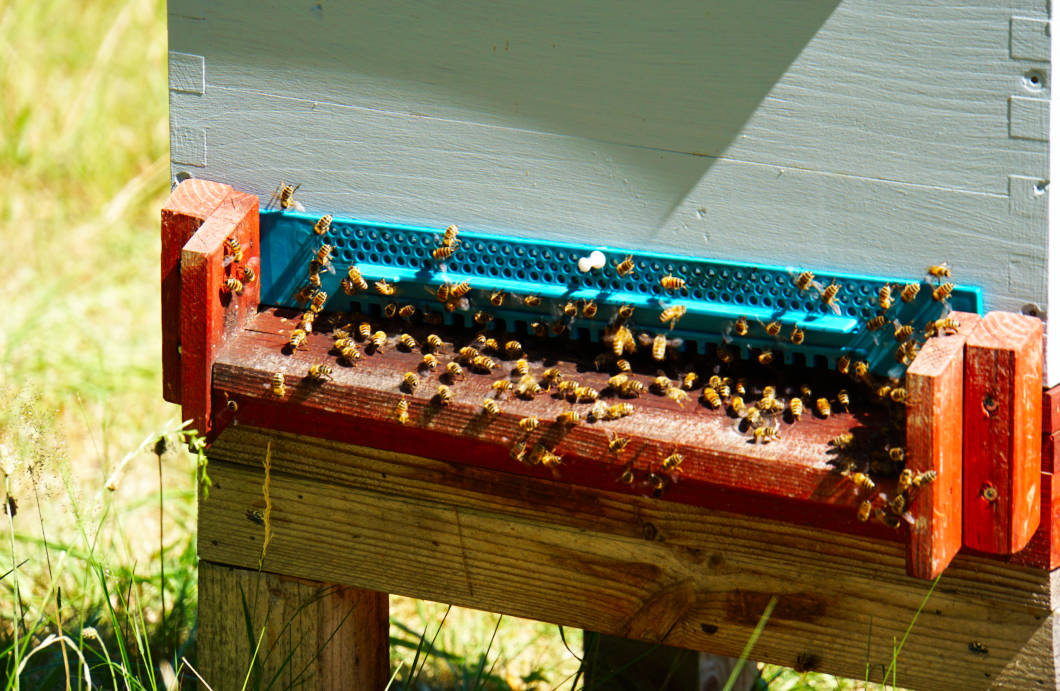
It was also very exciting that you can pull a board out of the hive. There, not only the excrement of the animals is collected, but also the mite infestation can be examined. Mites are one of the biggest threats to bee populations. Actually, the bees clean the mites away from each other. However, if humans take away the honeycombs, their actual food, too often, the bee has to constantly collect new food, has no time for personal hygiene and is “overworked”. The result, the bees die due to mite infestation and also due to the lack of food in winter. The use of formic acid can combat the mite infestation. Only man can do something against the overwork of the bees, in which the harvesting of the honey is considered critically and is better adapted to the rhythm of life of the bees.
Did you know…
- that bees travel distances of up to 7000 m in their search for suitable flowers.
- that the hive is placed at least 5 km away from the old location when moving to a new flower meadow. Otherwise, the bees will lose their orientation and fly to the old location.
- dass immer die Späher des Bienenvolkes entscheiden, welches Blumenfeld geerntet wird.
- that queen bees are fed only with royal jelly.
- that each queen bee is mated only once in a lifetime and carries the sperm supply in a kind of “pocket” on her body.
- that the new queen sounds shortly before leaving the brood comb. This is then the sign for the old queen to gather half of the colony around her and leave the hive within a few minutes. Only then do scouts set off in search of a new home.
- that the queen lays about 2000 eggs per day. It takes 21 days for the bees to hatch from their combs. It becomes problematic when the bees cannot find diverse flower fields. Then the queen also does not lay eggs.
There was so much more to discover about bees at the open-air museum in Schwerin. I found it insanely interesting and I learned a lot.
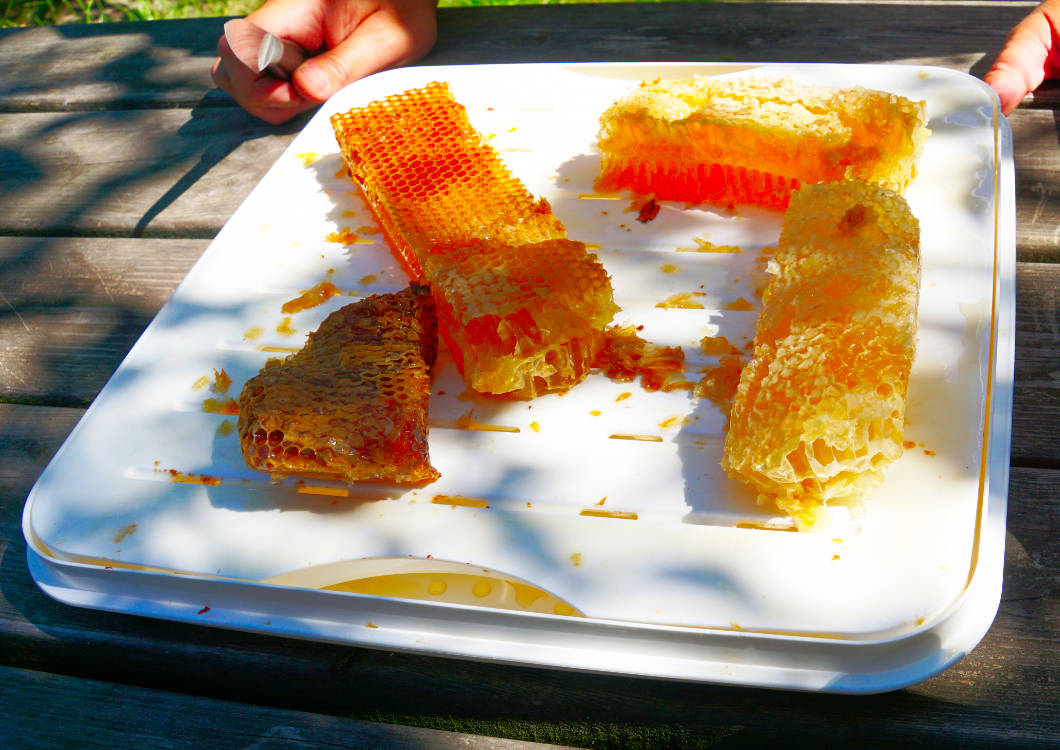
Have you ever tried the honey directly from a honeycomb. I could suck the sweet delicacy out of a honeycomb – simply delicious!!!!!
Address:
Freilichtmuseum für Volkskunde Schwerin-Mueß
Alte Crivitzer Landstraße 13
19063 Schwerin
Opening hours:
Mid May – end September
Tuesday-Sunday: 10 -18h
Monday closed
October
Tuesday – Sunday: 10-17h
Monday closed
Admission prices:
Adults: 5,-€
Discounts are offered.
Disclosure: The visit to the open-air museum in Schwerin took place as part of a blogger trip. The report on the visit is exclusively my own opinion and was written independently of the visit.
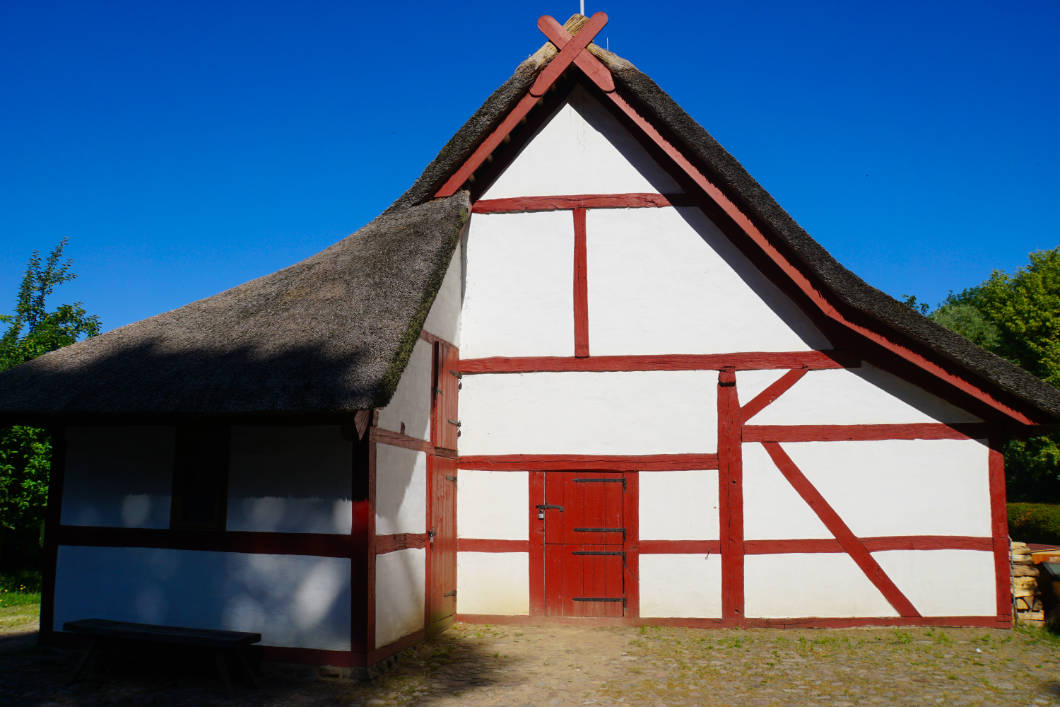
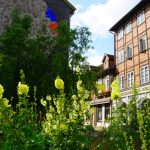


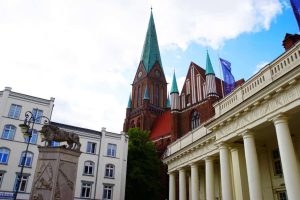
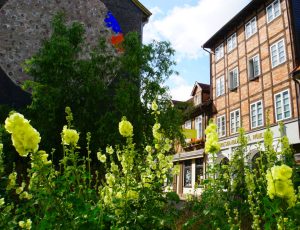

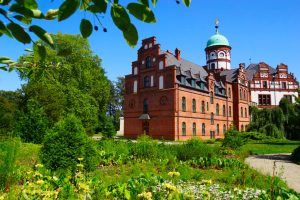
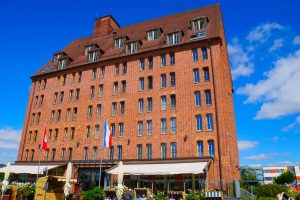

Leave a Reply